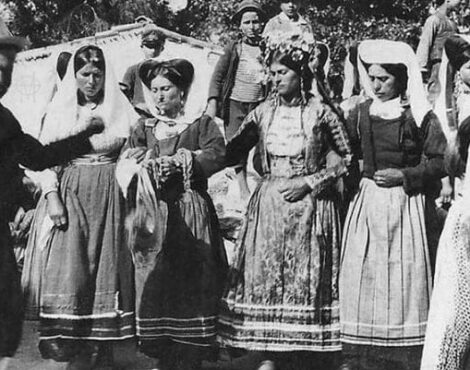The Corfiot dialect is a distinct linguistic variety that developed on the island of Corfu, reflecting the island’s turbulent history and the various cultural influences it has received. It is a form of the Greek language enriched with a multitude of Italian words and expressions, primarily Venetian, adapted to the structure and grammar of Greek.
The history of Corfu is closely tied to the presence of various conquerors, with the Venetians being the most significant, as they ruled the island from 1386 to 1797. During this period, the Venetian language and culture deeply influenced the local society. The Venetian language, a corruption of Italian, was the official language and was used primarily in the town by the upper social classes, while Greek was more common in the countryside. This coexistence led to a linguistic mixture, where the locals adopted many Italian words, adapting them to the phonology and morphology of Greek. After the fall of Crete to the Ottomans in 1669, many Cretans migrated to Corfu, bringing their own dialect with them. This further enriched the Corfiot dialect with new words and expressions. Additionally, the presence of other Europeans, such as the French and the British, also left their mark on the language, though to a lesser extent.
The Corfiot dialect is characterized by the strong presence of Italian elements, which have been fully integrated into the structure of the Greek language. These words have been adapted phonetically and morphologically, following the Greek grammar and syntax. For example, the Italian word “porta” (door) became “πόρτα” in Greek, while “finestra” (window) turned into “φινιστρίνι.” Another feature of the dialect is its musicality and melodiousness in pronunciation, influenced by Italian phonology. This gives the speech of Corfiots a distinct “sung” quality, making it recognizable and unique. Furthermore, the dialect includes unique expressions and idioms not found in other regions of Greece. Many of these expressions are rooted in historical events, local traditions, and the everyday life of the residents. These words reflect the influence of the Italian language and their adaptation to the Greek linguistic system.
Today, the use of the Corfiot dialect has diminished, mainly due to the prevalence of Modern Greek and the influence of mass media. However, the dialect remains alive through oral tradition, local events, and cultural activities. Perhaps the most significant example of this is the famous Petegoletsa, which serves as a unique cultural element of Corfu, keeping the local dialect and tradition alive. These are public theatrical performances, mostly taking place during the Carnival period, in the neighborhoods of the Old Town. The residents gather in the narrow streets, and from windows and balconies, they exchange satirical dialogues, humorously commenting on daily life, the political scene, love, social events, and their relationships with each other.
These performances, with roots lost in time, represent a form of popular street theater where the Corfiot dialect is used authentically and effortlessly. Through petegoletsa, participants freely express their creativity, keeping their linguistic and cultural heritage alive. In modern times, despite the dominance of the standard Modern Greek language, the Corfiot dialect continues to survive through such events, as well as through music, literature, and daily speech, especially among the older generations. Preserving and promoting the dialect is a significant concern for the local community, as it is inextricably linked to the island’s identity and history.
In conclusion, the Corfiot dialect is a living monument to Corfu’s cultural heritage, reflecting the island’s historical path and the diverse influence it has absorbed. Through petegoletsa and other cultural expressions, the dialect continues to be an integral part of the daily life and identity of the people of Corfu.





